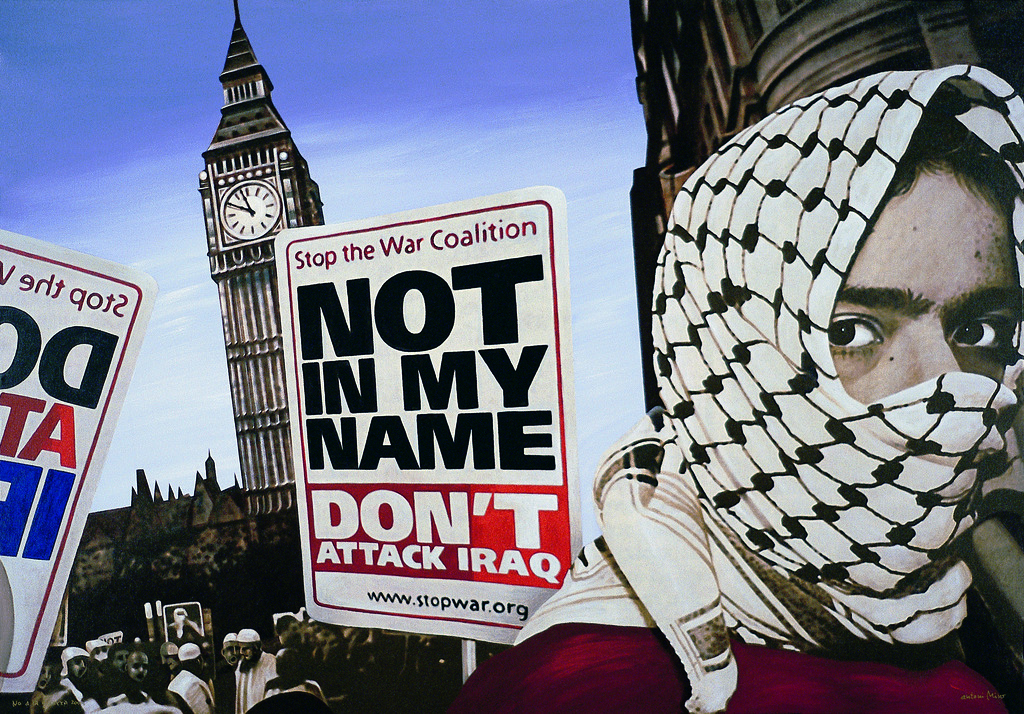No a la guerra (No to war)
Stop the War Coalition is a British peace organisation that has been fighting the so-called ‘war on terror’ campaigns waged since 2001 by the US (with the support of several allies, including the UK and Spain). The ‘war on terror’ was G. W. Bush’s response to the 9/11 bombing in Manhattan. The US began its invasion of Iraq on the 20th of March 2003.
During the previous month, the motto “No to War” in Spain corresponded the motto “Not in my Name” in the UK. A large part of society flatly rejected military intervention. Miró’s painting is part of a position arguing that attacking Iraq was not legitimate and would do nothing to help its people.
Three elements capitalise on the compositional scheme of the image: (1) the face of a young man half covered with a handkerchief; (2) the placard of the aforementioned anti-militarist organisation (which occupies the centre of the image); (3) Big Ben in the background. Including the tower of the Palace of Westminster, seat of the British Parliament, in the background makes it clear whom the criticism is aimed at and renders it as an artistic object. The placard whose content can be fully read is the main element conveying meaning, that is why it occupies a central position, together with a fragment of another placard on the left side, which can only be partially seen and whose orientation has changed. The placard identifies the conflict and the ideological approach that is being defended. Nevertheless, that does not stop Miró from changing its real colours from green to red.
De la Calle argues that the persuasive impact of Miró’s oeuvre draws on the artits’s work in the field of poster art and his knowledge of the techniques used in advertising. This background thus enhances Miró’s ‘awareness painting’. But De la Calle also addresses the notoriousness of this aforementioned process of awareness, which does not drain his particular plastic language by using it just for an ideological dialogue, but also for an evident aesthetic communication.
Here, the work of art is built by using painting to transform a photographic image. The foreground portrait of the young man plays a key role. His piercing black eyes stare defiantly at the viewer. It seems he is looking for support from the viewer. There is also a group of Muslims in the background on the left-hand side of the painting, but their relevance is secondary.The figurative treatment differs in each of the elements. The young man’s face and his head handkerchief are shown in detail, contrasting with the formal simplification of the Elizabeth Tower.
The same thing happens with the use of colours. Only the placards, the young man’s face and his clothes use colours lying outside the grey scale. The figures at the back and the buildings are painted in grey tones, providing a background over which the aforementioned features stand out.
Santiago Pastor Vila
